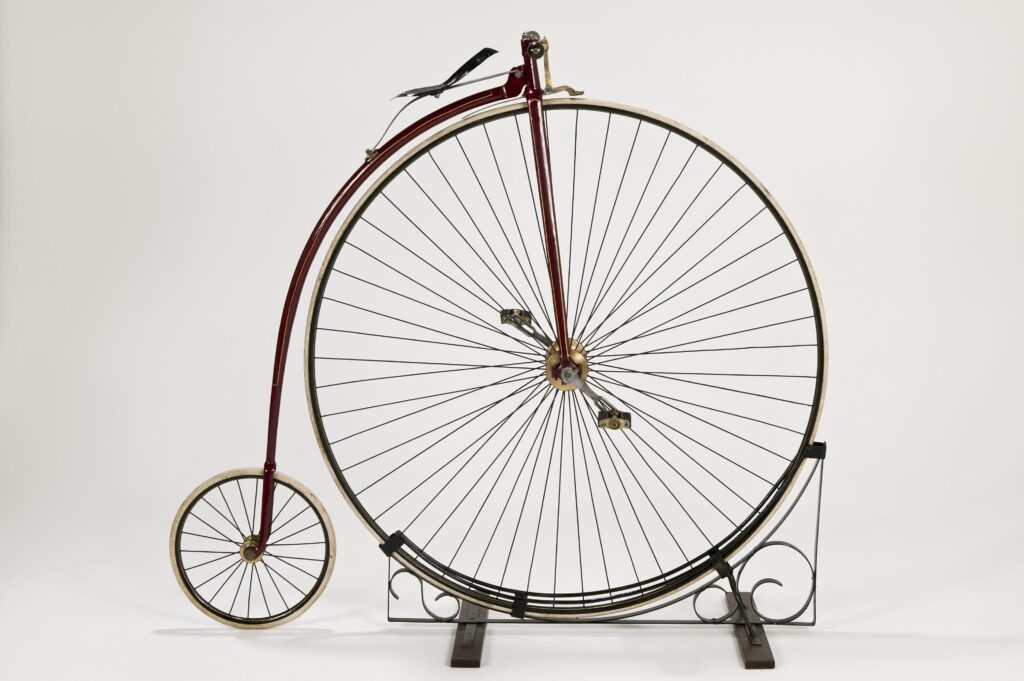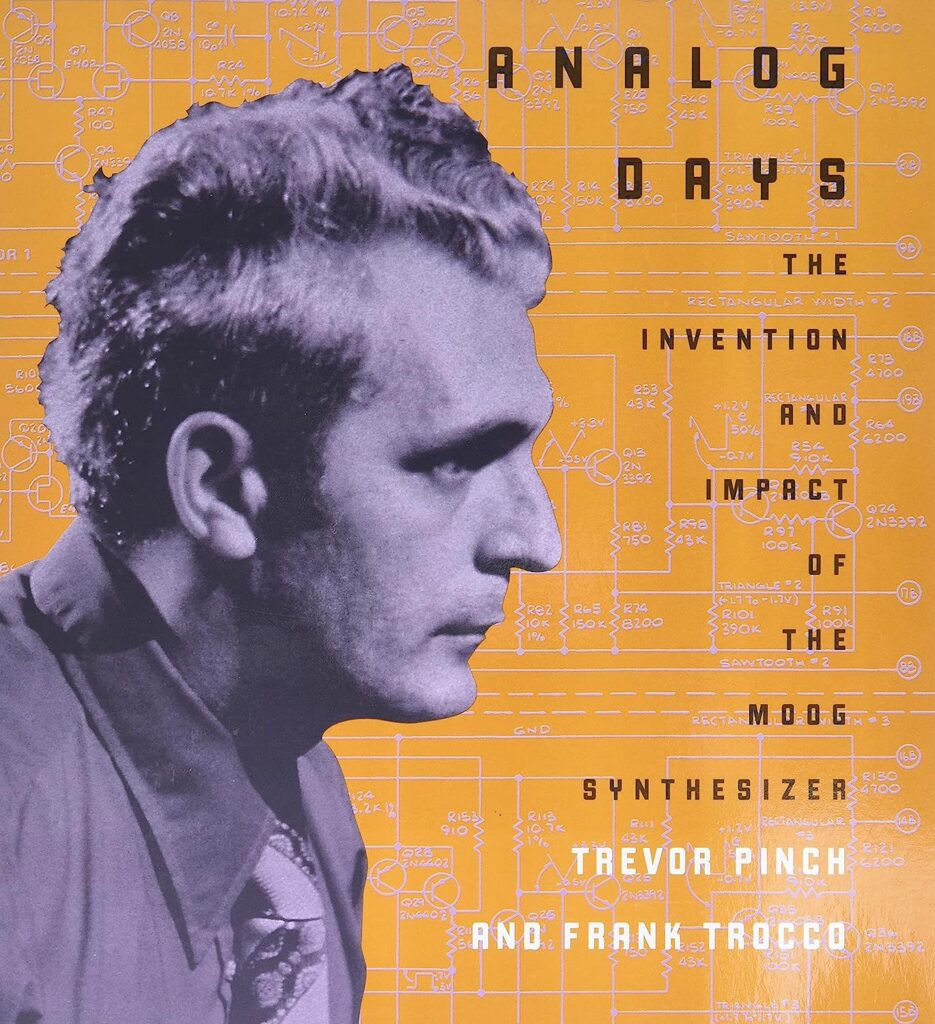Trevor Pinch’s legacy for media studies
Article DOI: https://dx.doi.org/10.15180/232007
Abstract
It is well known that throughout his long and brilliant career Trevor Pinch was a leading scholar in at least three research fields. In the sociology of scientific knowledge he was one of the most influential contributors, both alone and in collaboration with his mentor Harry Collins (see in particular Collins and Pinch, 1982; and Pinch 1985, 1986). He co-founded and developed the sociology of technology and the field of science and technology studies for which, in 2018, he was awarded the prestigious John Desmond Bernal Prize by the Society for Social Studies of Science (4S). Later in his career, he was a core player in the field of sound studies (see for example Pinch and Bijsterveld (eds), 2003, 2004, 2012), to which he was led by his work on the Moog synthesizer (Pinch and Trocco, 2002) and his passionate love for music.
However, the work of Trevor Pinch, and in particular the Social Construction of Technology (SCOT) approach that he developed with Wiebe Bijker (Pinch and Bijker, 1984), has also been influential for many other neighbouring research fields to which he contributed only indirectly or episodically. This is the case for organisational studies, for example, or for studies of innovation. It is also the case for media studies. In what follows, as a media scholar, I represent the intellectual debt of my field to the work of Trevor Pinch. To do so, I will first clarify the role played by SCOT in the disciplinary tradition of media studies, in particular in the 1990s and at the beginning of the new century. I will then move my focus to lesser-known works by Trevor Pinch on mediated communication, which he sporadically addressed as part of his broader research interests (related, for example, to the practice of selling). My attempt will be to retrace the tenets of Pinch’s own take on media as they emerge both from these too rare interventions and from the methodological reflection he has dedicated to the topic. In my final remarks, I will draw on the two preceding sections to highlight some other possible points of crosspollination between the current field of media studies and Trevor Pinch’s work, that remain to be explored in depth.
Keywords
obituary, Trevor Pinch
1. Social Shaping and Social Construction of Technology
It is not easy to disentangle the influence of Pinch’s work, and in particular of the Social Construction of Technology approach, from the influence exerted by the whole field of science and technology studies on media studies: the acquisition of SCOT’s tenets has in fact been part of a broader – and still ongoing – interdisciplinary dialogue that can be traced back to the early 1990s, and that has already been carefully mapped by different authors throughout its different stages (Mackay and Gillespie, 1992; Williams and Edge, 1996; Boczkowski and Lievrouw, 2007; Wajcman and Jones, 2012; Boczkowski, Crooks, Lievrouw and Siles, 2016).
A number of edited books published in the late 1980s and early 1990s attempted to present an overview of the main approaches of the STS field in those years and played a pivotal role in promoting this dialogue. Particularly significant are Social Shaping of Technology (1985), edited by Judy Wajcman and Donald MacKenzie, Shaping Technology/Building Society (1992), edited by Wiebe Bijker and John Law and, most prominently, The Social Construction of Technological Systems, edited by Wiebe Bijker, Thomas Hughes and Trevor Pinch (1987). Indeed, in 2012 the last of these was selected as one of the fifty most influential books published by MIT Press. The Social Construction of Technological Systems featured 13 essays – including the 1984 ground-breaking paper ‘The Social Construction of Facts and Artifacts’ by Pinch and Bijker, an introduction by Thomas P Hughes to his Large Technological Systems approach, a paper by John Law presenting the tenets of Actor Network Theory, and others. Notwithstanding their more-or-less subtle differences, what these approaches had in common was a similar way of conceiving the relationship between society and technology. They all in fact aimed to overcome technological determinism and linear models of ‘evolution’ of technologies to shed light on the processes and contingences through which social factors participate in technological design and give shape to the technological artefacts that enter our daily lives. They were all absorbed into the field of media studies under the umbrella term, Social Shaping of Technology (SST).
Some consideration of the disciplinary context of media studies in the late 1980s is needed to fully appreciate the relevance of this approach: in those years, the way in which the dominant approaches conceived of the relationship between media and society was still characterised by different forms of determinism. For example, the new wave of media theory that drew on the work of Marshall McLuhan attributed the impact of media on society and culture to their technological features (see, for example, Meyrowitz, 1985). In the media effects paradigm, conversely, media effects were seen as generated by exposure to media content. The introduction of SST into the field provided a precious intellectual resource for those looking to alternative disciplinary traditions to frame the relationship between media and society in more complex and non-deterministic ways. The field of audience studies is a case in point. Audience research that stemmed from the seminal work of Stuart Hall (1980) developed more in the direction of cultural studies and led to reception studies and the ethnography of media engagement (Morley, 1980, 1986; for an overview see Moores, 1993), and in the early 1990s to the theory of media domestication developed by Roger Silverstone (1992). All these approaches acknowledged social actors to have an active role in their relationship with media. Within the domestication approach, in particular, users ‘appropriate’ media; they adopt communication technologies and adapt media to their daily social practices and routines, and these are in turn modified by the presence of media. From this non-deterministic perspective, media engagement can take different forms depending on specific practices of appropriation, leading to different forms of media ‘effects’. Moreover, these same forms of appropriation, once intercepted by the market, can cause feedback loops that shape the design of media technologies themselves.
Within a framework deeply informed by the dialogue with SST, a specific influence of SCOT can be acknowledged in the emphasis on the ‘interpretative flexibility’ of technologies, and on social actors’ attribution of symbolic meanings to technological artefacts. In a nutshell, in SCOT ‘interpretative flexibility’ (Pinch, Bijker, 1984) refers to the fact that technological artefacts can be perceived and represented in different ways by different ‘relevant social groups’ (that see in them different possibilities or impediments to use). Similarly in domestication theory, making sense of media technology is a relevant aspect of their appropriation by users. Moreover, both in SCOT and in domestication theory, social representations play a relevant role in orienting the design of technologies, defining different and contingent trajectories of transformation.
The two approaches reverberated even more closely when, a few years later, Pinch and Robert Kline (1996) extended SCOT’s focus from designers to users, shedding light on their active role in adapting technologies to their own needs (or in Silverstone’s terms, in ‘appropriating’ them).
A decade later, SCOT remained a key interlocutor within the SST framework as the domestication approach was extended from electronic media to digital media (see for example Bakardjieva, 2005). In fact, in this phase it also played a key role in fostering a relevant disciplinary readjustment. During the 1990s, the field of media studies forked in two distinct, and in many respects poorly communicating, research branches: the one addressing legacy media, for which cultural audience studies were finally gaining a mainstream position; and the other, the field of new media studies, which focused mainly on online interactions. In the 1980s, when this second branch of study was taking its first steps, scholars conceived of the computer as a channel of communication that generated effects (such as, for example, disinhibition) stemming from its technical features: for example, computer-mediated communication was supposed to produce a disinhibitory effect on its users by removing visual cues from communication due to the narrowness of its bandwidth, that allowed only textual communication. Researchers aimed to measure these effects in laboratory experiments. In the 1990s, new media scholars started instead to think of the internet as a ‘cyberspace’: a symbolic and de-spatialised interactional space that nurtured specific forms of cybercultures which could be studied ethnographically (Tosoni, 2013). This approach, however, implied a methodological opposition not only of the internet to any other medium, but also of the online to the offline, here conceived as two distinct domains of interaction. At the beginning of the new millennium, a new generation of media scholars started to point out the limitations of such a spatial metaphor, advocating for its dismissal. By and large, they drew on the domestication approach and on SST, and in particular SCOT, to underline how it was not up to the researchers to propose a metaphor to make sense of the internet (‘channel’, or ‘cyberspace’): the task was instead to carefully investigate the interpretative flexibility of the medium, addressing the different metaphors (or social representations) that led users in their practices of appropriation (see in particular Hine, 2000): in this way, they opened the ground for the current reunification of the field.
The relevance of the work of Trevor Pinch for media studies, however, cannot be reduced to the influence it exerted on the discipline’s reception of SST. In fact, SCOT has been adopted in a more literal and direct way in three main branches of research. First of all, in attempts to open the ‘black box’ of technological design, in particular for digital services and platforms – this is the case, for example, with city dashboards (Sadowski, 2021) or in studies of TikTok (Savic, 2021); second, as a way to frame the history of media technologies’ transformation in non-linear ways – as in the case of the historical take on WeChat by Gialuigi Negro, Gabriele Balbi and Paolo Bory (2020), or on approaches to Wi-Fi technology by Maria Rikitianskaia (2022). Finally, and with more pragmatic purposes, SCOT has been used to tune effective strategies of media application design and deployment through participatory design, as for example described by Varsha Koushik and Shaun Kane (2022) for augmented reality, or by Christopher Drew and Amandeep Mann for mobile phone learning applications (2018).
In addition, as we will see in the next section, Trevor Pinch has also (sporadically) addressed in a direct way the topic of mediated communication, even if this scholarship, and the methodological approach it implies, remain to be explored in the field.
2. The materiality of mediation: a non-media-centric approach to media
Trevor Pinch only rarely addressed media and communication technologies; among the technological artefacts for which he developed the sort of ‘temporary and controlled obsession’ that he held necessary to do good research it is much easier to find bicycles, Moog synthesizers, cars or even bent spoons than TV sets, mobile phones or internet applications. Nonetheless, on several occasions his broader research interests led him to address the theme of mediated communication. Although more episodic than responding to a specific research programme, these contributions reveal a coherent and original take.


This take already characterised Pinch’s works on the practices and expertise of selling (Pinch and Clark, 1986; Clark and Pinch, 1992, 1994; Clark, Drew and Pinch, 1994, 2003); indeed, he studied with Colin Clark in the mid 1980s, doing ethnographic research mainly on the open markets of England. In two supplementary chapters added to a reissue of The Hard Sell (Clark and Pinch, 2014; or. ed. 1995), the monograph resulting from these inquiries, the authors focused on the ways the ‘pitchers’ moved to the US and to TV direct selling, and there transferred their expertise and adapted their previous strategies to mediated selling and to the material arrangements of TV studios. In this work, the authors firmly set their main analytical focus on what, at a later point, Pinch described as ‘scripts’ – ‘observable, recurrent activities and patterns of interaction characteristic of a particular setting’ (Darr and Pinch, 2013, p 1601), that constitute parts of a practice, in this case of selling. These could then be investigated to see how they were adapted to accomplish selling on television. The authors noted, for example, how the strategy of ‘manufacturing scarcity’, which in face-to-face selling was performed by claiming that an offer could be applied only to the first few customers, ‘on television […] becomes a limited period of time. They may have this clock ticking down’ (Tosoni and Pinch, 2017, p 143). In a similar way, since in television a potential customer cannot see other people buying, ‘they show the phone bank, and they have the sound of the telephone calls coming in. In this way, people know that other people are calling’ (Ibid).
The practice of selling is also at the centre of a paper on ‘material scripts’ by Pinch and Asaf Darr (2013). Here the authors use ‘material scripts’ to refer to those recurrent patterns of interaction that are accomplished by social actors involving specific material artefacts – in the case of this paper to create obligation. According to the authors, material scripts ‘are important resources in helping to establish a socio-technical space in which obligations can be established and transactions can take place. As part of accomplishing sales encounters, sellers and buyers strategically employ the material setting and the materiality of the objects they trade in what we call an escalating scale of obligation’ (pp 1602–1603): one example is ‘handing out shopping bags to audience members who have earlier professed an interest in the goods’ (p 1614), or of providing them with shopping trolleys. For the authors, this same approach, inspired by Goffman (in particular, Goffman 1959, 1963, 1974), can be fruitfully adopted to shed light on how obligation is constructed in online shopping platforms like Amazon. As they point out, online ‘it may not always be possible to identify a ‘salesperson’ […] but [nonetheless] one knows [when] one is engaged in the act of buying. […] indeed most websites ensure there is no ambiguity over the buyer’s role, using symbols and language drawn from retail encounters such as ‘shopping basket’, ‘shopping cart’ and ‘checkout’. Materiality also matters online, with shoppers [being] guided by technologies which are often invisible to users. […] Online selling frequently takes the form of many individual interactions dispersed in time and space, but again features such as the shared website offer a route into studying this form of selling as interactional process’ (p 1618). In his recent book Gift-Giving as a Conversion Device in Online Marketplaces (2022), Asaf Darr has fruitfully applied this approach to selling practices taking place in the shopping platform Etsy, focusing in particular on the role of gift-giving. For the author, gifting ‘produces the microfoundations of trade in the online marketplace studied in varying fashions and social depths. In the anonymous online marketplace, contractual and promotional gifts are employed to attract buyers to platforms and to specific online shops, and to constitute an initial and limited obligation to visit a shop and possibly purchase products’ (p 11). Buyers, on their hand, ‘often reject the rhetorical presentation of the contractual gift as a form of gifting, and instead dub it a price reduction or promotional scheme’ (Ibid). Yet this does not exhaust the significance of gifting in online sales: ‘in addition to the use of gifts for promotions, gifting on Etsy is employed to perform identity and to convey emotions to the exchange partners, most of them geographically and socially distant. [Buyers themselves use gifting] to perform their unique identities as artists, as creative people, or, more generally, as people who appreciate creativity’ (Ibid).
Users’ scripts and practices within digital environments are also at the centre of Pinch’s study of the economies of online reputation on Amazon and other e-commerce sites, undertaken in collaboration with Shay David (David and Pinch, 2006). Here, the authors shed light on the reasons behind plagiarism and self-plagiarism (copying one’s own same review for multiple articles) of online reviews: a phenomenon that, based on their own sample (50.000 reviews of 10.000 different objects scraped from Amazon), they estimated as having occurred in the one per cent of cases. The authors found that the multiplication of identical reviews is enacted not only for the obvious reason of promoting ‘the sales of a specific item’ or ‘to bolster support for an item’ (p 11), but as part of more articulated scripts aiming, for example, at increasing the credibility and to build the identity of the reviewer, or as a way of promoting a particular agenda. Some repeated reviews, for example, aimed at boycotting particular products in favour of alternatives, or intended to discourage users from shopping on Amazon; others promoted a conspiracy-theory video to Amazon customers interested in books critical of George W Bush, thus selecting a potentially interested audience; some others, again, used the review to try to send a message to their favourite artists. For the authors, ‘the multiple uses of this new digital technology […] demonstrate […] the power and agency of users, [since] […] they can radically reinterpret the meaning of existing technologies’ (Ibid). This leads the authors to criticise too essentialist notions of ‘affordances’, that ‘read off a definitive or ‘best–use’ from the design of an artifact’ (Ibid). For the authors, in fact, ‘what a technology is good for, or what can be done with it, is in itself a process of social construction’ (Ibid), where ‘the social, historical, economic, and legal contexts are decisive in shaping the ways that technologies are interpreted’ (Ibid).
This nuanced interpretation is also visible in another study on the economy of online reputation, this time in a music website called ACIDplanet.com (Pinch and Athanasiades, 2012), where users post and review the music they produce using the software program ACID by Sony. Once again the authors show how participants can seize the intended affordances of the platform to ‘game the system’, in order to obtain more reviews for their own tracks, rank higher in the website charts and obtain more visibility. They can for example open different profiles to positively review their own work, send ‘mass email solicitation’ (p 490), or ‘write meaningless reviews of other users’ songs, [offering] short positive reviews […] along with a ten-star rating to […] pressure [other users] to return the favor’ (Ibid). All these scripts, that some users label ‘chart whoring’, are discouraged by the online community, which through repeated interactions has come to define its own ethos, rules of behaviour, and expected expertise (like the one implied in ‘transducing’ sound features in words, in order to write reviews). In this sense, ‘the website, ancillary technology, and users together form what [can be defined as] a sonic sociotechnical community’ (p 498), where ‘conventional forms of musical identity and ways of allocating status’ can be radically reconfigured or reinforced, depending on the actual practices enacted by users.
The approach underlying all these interventions – and others that were not developed into full papers (see for example Pinch and Athanasiades, 2009; Pinch, 2007; Pinch and Kesler, 2011) – is discussed by Trevor Pinch in his analysis of the role of materiality, and of technological mediation, in Goffman’s sociological framework (Pinch, 2010). In this intervention, Pinch clarifies how, for the Canadian sociologist, technological artefacts such as a merry-go-round or the famous doors of the Shetland Island hotel (see Goffman, 1959) are employed by social actors in their face-to-face interactional strategies, for example for determining the staging of an interaction and creating zones such as a shown stage and a hidden backstage. Within this analysis, technology can play the role of a mediator in face-to-face interactions too; Pinch concludes that ‘there [could] be crucial differences between online interaction and so-called ‘face to-face’ interaction, but mediation per se does not seem to be the crucial difference’ (p 420). Therefore, ‘when it comes to the internet we should avoid the trap of declaring that online interaction is special because it is technologically mediated interaction’ (Pinch, 2010: pp 419–420). Instead, as for any other technological artefacts, the analyst should focus on how social actors use media to perform their practices (i.e. selling), and how they use it to enact the various scripts these practices entail (i.e. manufacturing scarcity showing a clock), ‘examin[ing] how participants might negotiate the technological choices and what sorts of factors constrain or enable those choices’ (p 422).
Thus Pinch’s perspective attributes a pivotal role to users’ agency. It demands that the analyst pay attention to the ways users take advantage of the features of a medium, sometimes circumventing its foreseen or intended uses for the ends of the practices/scripts they are performing; at the same time, they must focus on the ways users adapt these same practices/scripts to the features of the technological artefact. This negotiation cannot be simply deduced from the affordances of the medium conceived in an abstract and essentialist way. On the contrary, they must be observed ‘in the unfolding of ongoing interaction’ when material scripts as recurring patterns of interaction ‘are performed or accomplished’ (Tosoni and Pinch, 2017), but also when some sort of breach interrupts the normal course of actions. In fact breaches are of particular interest to Pinch since they cause social actors to improvise a re-negotiation of stabilised patterns of interaction, allowing the researcher to observe ‘the situated, cultural, political, and socioeconomic factors’ (Tosoni and Pinch, 2017, p 125) that are otherwise taken for granted. In this case Pinch talks about ‘an accomplishment approach’ to material performativity: an approach that ‘takes us beyond the routine behaviours implicit in material scripts and their assumed sequences of action, which may make us blind to the possible improvisations until a breach, absence, or disruption occurs that occasions the repairs that make habitual action visible’ (Tosoni and Pinch, 2017, p 125).
This ‘whole way of looking at things’, that Pinch calls ‘material performativity’ (p 124), is actually conceived as supplementing SCOT, allowing the approach to deal with mediated interaction: ‘the web is a peculiar infrastructure because of the interactional meaning-generating capacity it offers. Approaches such as social construction of technology and actor network theory could examine […] technical changes, but I think that they have a hard time dealing with the world of interactive meaning that the internet provides for its users. My suggestion is that we need to combine the attention to technological artifacts, which is the strength of approaches such as actor network theory and social construction of technology, with more traditional sociological approaches like Goffman’s, which attend to the interaction order and the meanings which materiality and technology facilitate’ (Pinch, 2010, p 424).
Within the field of media studies, however, the reception of this integration of SCOT remains by and large confined to specialised areas of research, in particular in studies of online selling and online reviews. Xiaoli Tian (2018), for example, applied the approach to the leading shopping website Taobao.com, to make sense of why Chinese customers prefer it to physical shopping. For the author, this does not depend on abstract and purely rational considerations (such as a favourable price comparison), but on the material arrangement of the selling interaction, and on how it is consequently performed. For online customers the interaction requires ‘fewer social obligations and less affective labor’ (p 39): in particular, the social and emotional work related to ‘the ambiguous status hierarchy and the tendency of salespersons in physical stores to compete for status with customers’ (p 39), typical of contemporary Chinese culture.
3. Conclusions
As we have seen, SCOT has been widely received within the field of media studies where, on the one hand it has helped scholars shed light on the transformation of media technologies over time as well as, more pragmatically, it has fine tuned strategies for the effective deployment of communicative infrastructures. On the other hand, from a theoretical point of view, it has also contributed – as part of SST – to ‘the rejection of technological determinism, and the acceptance of a relatively strong form of social constructionism […] [in] the prevailing perspective in new media studies in Europe, North America, and elsewhere’ (Boczkowski and Lievrouw, 2007, p 954).
More recent approaches to material scripts and accomplishment, by contrast, have not been fully received in the field of media studies, notwithstanding the fact that they were held by Pinch as necessary to complement SCOT when dealing with online, and mediated, interaction. It should be noted how much these approaches resonate with pleas for non-media centric approaches to media (Morley, 2009; Krajina, Moores and Morley, 2014) advanced from within the cultural audience studies tradition I mentioned above. As David Morley comments, decentring the media in our analytical framework would help us ‘to understand better the ways in which media processes and everyday life are interwoven with each other’ (Morley, 2007, p 200). A specific proposal to achieve this methodological decentring of media studies consists in moving scholars’ main analytical focus to the broader social practices that media-related activities are a part of, in a way that is very similar to the key methodological move proposed by Pinch (see Couldry, 2004; Tosoni and Ridell, 2016):[1] opening a more systematic confrontation with his post-SCOT approaches would doubtlessly benefit this methodological effort.




